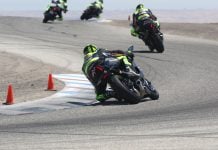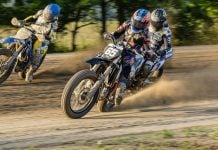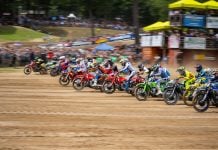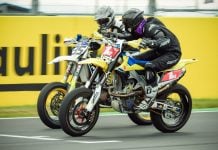Americas MotoGP™ debrief with Masao Azuma Bridgestone slick compounds available: Front: Soft & Medium; Rear: Soft, Medium & Hard (Asymmetric) The inaugural Americas Grand Prix at Austin’s Circuit of the Americas was a race to remember as Repsol Honda’s Marc Marquez became the youngest ever race winner in the premier class, claiming victory ahead of his teammate Dani Pedrosa and Yamaha Factory Racing’s Jorge Lorenzo who finished in third place. Track conditions at Circuit of the Americas varied greatly over the race weekend but for the main event on Sunday, sunny skies and a track temperature of 45°C greeted riders for their first taste of racing at this impressive venue. Q&A with Masao Azuma – Chief Engineer, Bridgestone Motorsport Tyre Development Department The Americas Grand Prix was the first race where the CRT riders had their own, softer rear slick allocation compared to the works riders. What was the verdict from the riders on this change to tyre supply? “The feedback we received on the CRT-specific rear slicks was overwhelmingly positive and all the riders on this specification of machine used their specific soft compound rear slick throughout practice, qualifying and for the race. The provision of slicks to CRT riders that are one step softer than for the works riders is important not just to improve the safety of the CRT riders, but to also give them tyre compounds more suited to the lesser power outputs of their machinery to help them bridge the performance gap to the prototypes. “The layout of the Circuit of the Americas means having a lower power output is even more of a disadvantage than normal, but the performance of riders like Aleix Espargaro who both qualified and finished the race ahead of some prototype bikes shows that giving the CRT teams tyre compounds more suited to their level of performance is a change for the better. We may see at tighter circuits such as Jerez and Laguna Seca that the CRT riders can take another step towards the works bikes in terms of lap time.” The track conditions changed considerably from the first free practice session to the race. How did this affect tyre performance and did you expect these kind of weather conditions at Austin? “The Circuit of the Americas is new and hasn’t been used heavily so we did expect that the track would be ‘green’ for the first session. However, this past weekend Austin experienced an unseasonable cold snap and there was very heavy rain on the day before the first practice session as well as strong, cold winds on Friday. All these factors combined to present very low grip levels on Friday – especially for FP1 – and so the softer slick options were preferred during these sessions. Almost all the riders, including those taking part in Moto2 and Moto3 said that the track on Friday morning was extremely challenging with little grip. From a tyre perspective though we are happy, as in that cold morning session the warm-up performance and enhanced rider feel engineered into our current generation of MotoGP tyres enabled them to negotiate the circuit safely and there were no crashes in FP1. “After a couple of challenging sessions on Friday, both the weather and track began to improve and as a result we began to see more variety in the slick tyre compounds being selected by riders. Our expectations were for warmer temperatures for this race, but the wide operating temperature of our slick compounds ensured that we weren’t caught out by the cooler than expected temperatures. All of the front and rear slick options we brought to Texas performed well over a race distance, though had track temperatures been slightly higher, I believe we would have seen more riders select the harder rear slick option for the race.” Bridgestone used the two pre-season tests at this circuit to decide on compound specifications for this race. Did you learn anything new over the race weekend regarding tyre performance at this circuit? “We already had a lot of information from the two pre-season tests at this circuit but yes, having all the bikes on the circuit competing in a wide range of track conditions provided us with lots of additional data and some insights that we didn’t get from testing. Overall, tyre performance at the Circuit of the Americas was very good, but analysis of the race tyres after the event has revealed some valuable information that can help us when developing tyres for next year’s Americas Grand Prix.”
The Final Round Of Press Releases From Last Weekend’s Various Races
The Final Round Of Press Releases From Last Weekend’s Various Races
© 2013, Roadracing World Publishing, Inc.






